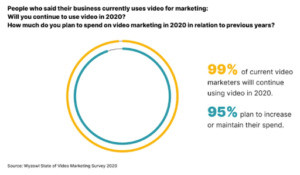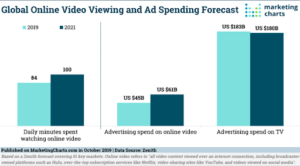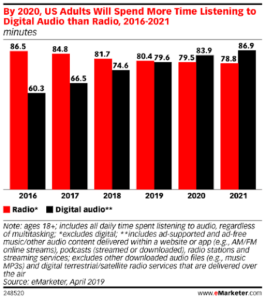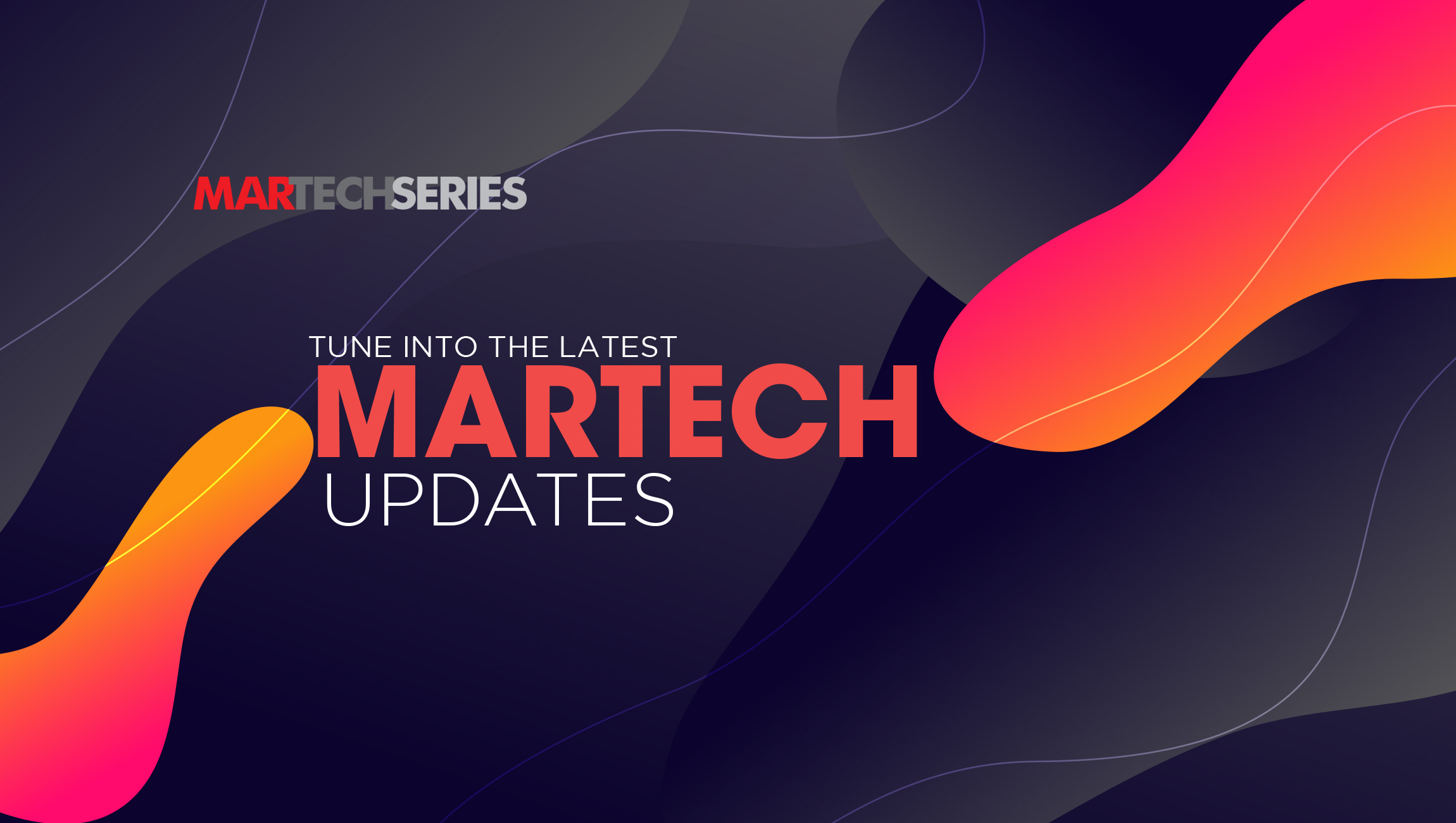Summarizing experiences and outcomes of conferences that were held last month by IAB ALM and CTV Roundtable, I can pinpoint one overarching idea: programmatic buying is peaking, and it’s no longer bound only to digital media – today, it is represented by television, radio, and out-of-home technologies. A new Winterberry Group study reveals that this year, programmatic ad spending will account for $389.5 billion, which is 7.2% more than in 2019.
Programmatic advertising has always been susceptible to tech innovations, but the introduction of CTV, OTT, Smart Wearables and immersive ad formats in 2020 will give marketers even more chances to create engaging, highly-personalized customer experiences. Having a handful of the freshest insights from the conferences, I’ve selected five key trends that will transform automated media-buying and turn it into ultimately profitable ad space.
OTT and CTV Drive the Large Macrotrend
As Winterberry Group research predicts, ad spending on addressable TV and OTT will see a 44% boost in 2020, while linear TV will barely witness a 1.9% increase. Digital ad spend on connected devices this way, will reach $5 billion in 2020.
With Internet-powered broadcasting, the viewer is gaining control over the content navigation and overall viewing processes. TV watching becomes interactive – the audience gets content on-demand, obtains announcement of TV shows in real-time and goes online straight from connected devices: smartphones, game consoles, tablets, and Smart TVs.
The interactive content goes along with interactive advertising. From the TV screen, the user signs up for a complimentary haircut, orders pizza or gets a free car test drive after online form completion (the Ford ad campaign aired at Czech TV channel in 2019 is a great example).
With such campaigns, advertisers receive user data and detailed statistics necessary for ad campaign attribution. New-generation programmatic platforms, meanwhile, become the tools that enable personal targeting on TV and measuring TV advertising – something that recently was only possible for the web.
99% of Marketers Explore Video Marketing
Taken that video watching stats are growing each year, it strikes no one by surprise that 99% of the marketers who currently use Video Marketing will continue to do so in 2020.

Just take a quick look at the stats:
- 8 billion videos are being watched daily on Facebook.
- Instagram stories can triple the influence of ad message, brand recall, purchase intent, and CTR.
- Sponsored Instagram videos receive comments 3 times more than photos.
- YouTube ads increase brand awareness globally 30% better than other ads.
- 88% of marketers believe that Video Marketing is key to positive ad ROI.
- By using videos on landing pages, advertisers can increase conversions by 86%.
Plus, we can see a 19% increase in overall video watching among customers. When the daily watching time in 2019 reached 84 minutes per day, in 2020 it increased to whopping 100 minutes per day.

As a CRO of SpearAd, I sometimes work with arrays of data that indicate that countries like the U.S., China, and Japan represent half of the global programmatic video revenue makers. An analysis of 40 trillion seconds of video ad watching shows that 60.2% watched on mobiles. The cost per impression on the programmatic ad platform is influenced by many factors: ad type, traffic type, and geo, but when it comes to video formats, the advertiser spends nearly $0.10 to $0.28 per view.
The greatest thing about Video Marketing is that ad messages can be served in various video formats, each one performing best for certain campaign goals. According to our data, the most popular ad formats in 2019 were:
Rewarded video ads. eCPM of rewarded video grew significantly in 2019, averaging $13.75 for iOS and $12.01 for Android. The average CTR was 5-10%. This in-app ad format works specifically well for in-app ad campaigns and drives 30% higher engagement rates in comparison to other formats.
Playable video ads. Playable videos are also among those in-app stars able to generate ~10,5% CTR on average, and what’s most important, ~9,600 installs per month (since playables promote new mobile games).
Interstitials. eCPM of interstitial videos has increased slightly in 2019, reaching $9.01 for iOS and $5.44 for Android. CTR of interstitial ads reached 5-10% and the format remained popular since it suits both mobile and desktop environments.
Native video ads. Seamless native Video content delivery on average translated into 40% higher CTR compared to other formats (8-10%). They also produced 55% more views since they typically fit the content and context of a page.
The Future Is Shoppable
As AdTech experts point out, shoppable video is another good opportunity to showcase the product in detail within video content that sends the user directly to the landing page upon the click. The concept of shoppable video is not new, but IAB research states that 49% of advertisers budgeted in shoppable ads in 2019. It’s reasonable to assume that the next wave of video evolution will be devoted exactly to this trend. Like no others, shoppable videos trigger positive emotional responses and lead to immediate purchase, which significantly increases ad campaign effectiveness.
Impacts of Google Cookie Shutdown and Format Restrictions
Cookies have been around for 25 years, and today, they’re about to crumble as Google announced a shutdown for them this January. In addition to this, from August 5, 2020, it will stop showing 3 more video types qualified as “disruptive.” Digital ethics, privacy data protection regulations (CCPA and GDPR) and now cookie support shutdown – these are all critical issues that will help to address the digital trust crisis that we have today.
The great advice at this stage for publishers – praise the importance of all the data that you’ve gathered over the past couple of years. While you still have it, use this data to determine the types of content that engage your visitors and drive the most convertible traffic. If you are an advertiser or a brand, it’s time to embrace contextual targeting and nourish the value of first-party data to become less cookie-dependant. Practice DTC (direct-to-customer) advertising campaigns to put your customers in the center of interaction to help your users provide you the data voluntarily and legitimately.
From time to time, revise recommendations from the Coalition for Better Ads to make sure you don’t violate any format restrictions. Finally, apply ad quality reports from Google to see if the ad format corresponds to Chrome’s advertising standards.
Wearables and Audio Advertising Formats
In the multi-experience world, customers don’t hold computers in their hands – the world is their computer. Multi-experience drives a new kind of interaction with users based on automating all human activities: expert systems and autonomous devices. Technologies are exploding and forming the foundation for powering the smart spaces around us.
Wearable gadgets, or Wearables (smartwatches, earphones, fitness trackers, smart glasses, etc.), can collect the data about user location, lifestyle and health indicators. Imagine what space will be available for the advertisers when wearables become even more advanced.
Let’s say your customer is strolling down a shopping alley. He/she strolls near the shop he/she once made a purchase at, and his/her smartwatch delivers a location-based pop ad that offers a 25% discount for the next purchase. Plus, he/she can enter the shop and become familiarized with the offer more closely. In the future, there will be plenty of ways to interact with your customers using wearable technologies. More importantly, the ads will be suited specifically for wearables taking the form of helpful reminders or handy audio ads.
What do we have now? Streaming OTT services through Netflix and Amazon Prime are now the predominant way to consume content, and most streaming takes place on mobile devices. It gives a big push to the hands-free audio ad formats that don’t interrupt the users; e.g. during the game, breaks during TV streaming or music scrobbling.
By 2021, adults will be listening to 86.9 minutes of digital audio and 78,8 of radio on average. Thus, the ad spend on interruption-free audio formats is set to grow to $1.6b by 2022. With algorithmic ad-buying available on the radio, the medium will soon be redefined like TV – advertisers will be able to target the right listeners and perform real-time campaign attributions.

Wrapping It Up
Starting with the futuristic smart wearables and ending with the trending CTV advertising and immersive formats, today’s ad market is swarming with innovations and new approaches to campaign management. What’s also important is that the world is moving towards transparency, privacy and user-friendly advertising that’s transforming day-to-day ad operations and contributing to deeper and more meaningful personalization. Upon adapting to these changes, marketers will be able to turn them into new business opportunities that have a positive impact on business in the years to come.











